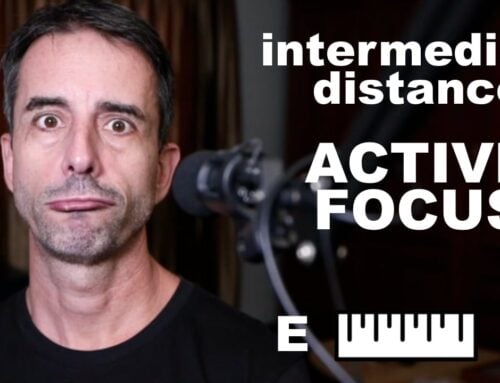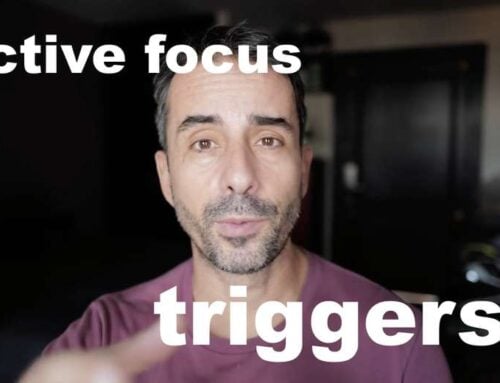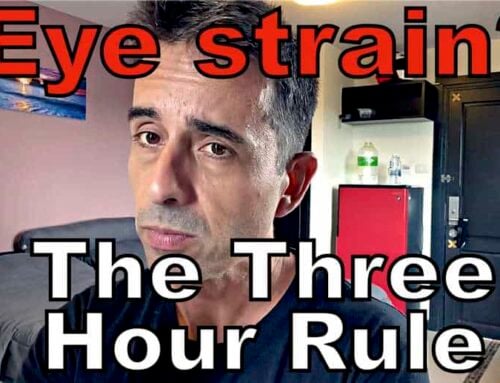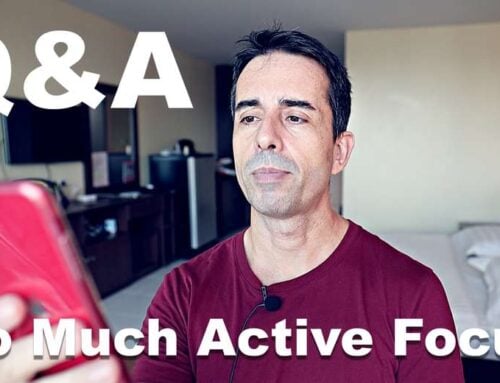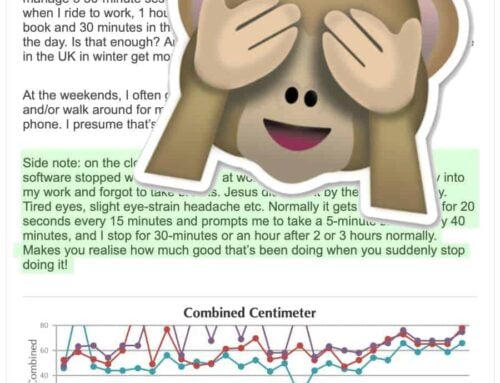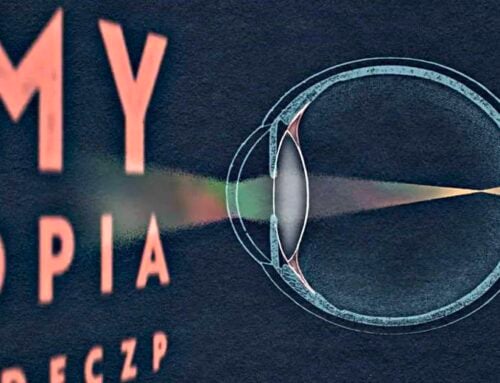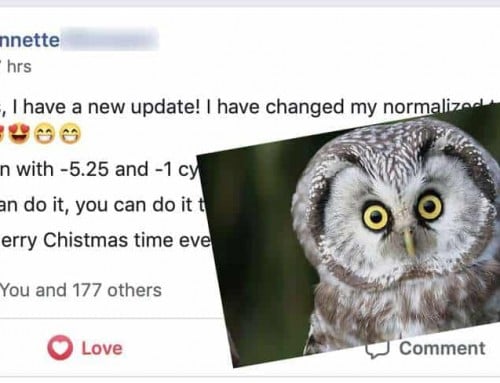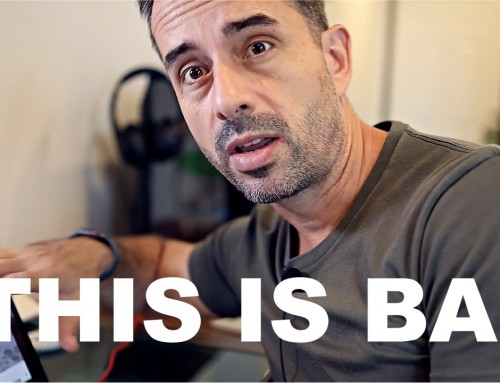Plateaus. A dreaded word, of no more 20/20 gains.
Here’s the thing, the progression that you’re likely to experience. You start out with endmyopia, accepting the bearded sage’s wisdom as your only true and divine eye-gospel. You find gains-ful salvation from the lens sellers and find yourself needing less and less of their artificial diopter eye poison.
You’re making righteous gains, just like the ones you keep reading about in all the improvement reports. Your vision improves, you’re feeling great.
And then it happens.
Sooner or later, maybe six months in, maybe a year, at some point, the gains stop. Not for everyone. Some are lucky and get all the habits right, getting the right balance of reduced strain and additional stimulus, and always making the necessary reductions of diopters on time.
But not everybody gets completely lucky (or has BackTo20/20 access with the structured format and Jakey support).
If you’re among those less fortunate, maybe you hit a plateau.
We talk about plateaus quite a bit here in the blog (hint – go to Google, type in “endmyopia plateau” to catch various blog entries). They’re usually caused by an imbalance in the strain-stimulus equation. You need to reduce your strain past a certain point (no daily unresolved ciliary spasm), and you need to add stimulus past a certain point (frequent, minor, daily active focus as part of good habits).
If you get ciliary spasm that you don’t resolve but also good stimulus, which is common, you may end up in an equilibrium between the two. Not so much strain that your vision deteriorates when combined with the stimulus, but also not enough of it the other way around, to keep improving.
That’s all it is. Your eyes aren’t broken, there’s nothing wrong. The plateau is just a matter of having to tweak strain-stimulus.
Here’s what I posted in our darling Facebook group, the other day:
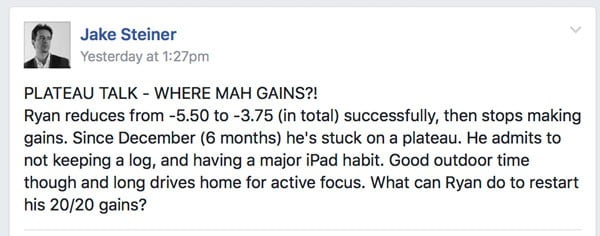
(original thread in support forum)
And here’s the sage bearded advice on this plateau:

Sagetown.
Simple when you know how, right?
The most important thing to realize is that you’re fine, you’re not some outlier case with eyes that only improve x diopters and then quit. The human eye is a fairly genius plot, part of it’s inherent design being to always adjust axial length and seek emmetropia. Your job is to keep its strain down and feed it the stimulus necessary for the biology to be able to respond properly.
And that’s all.
Bonus Tip: You notice how a lot of the guru footprints happen in various media. Here of course, but also the Facebook group, and our YouTube channel. Ideally you’re following all those venues to get the most of the suggestions and updates.
Cheers,
-Jake




